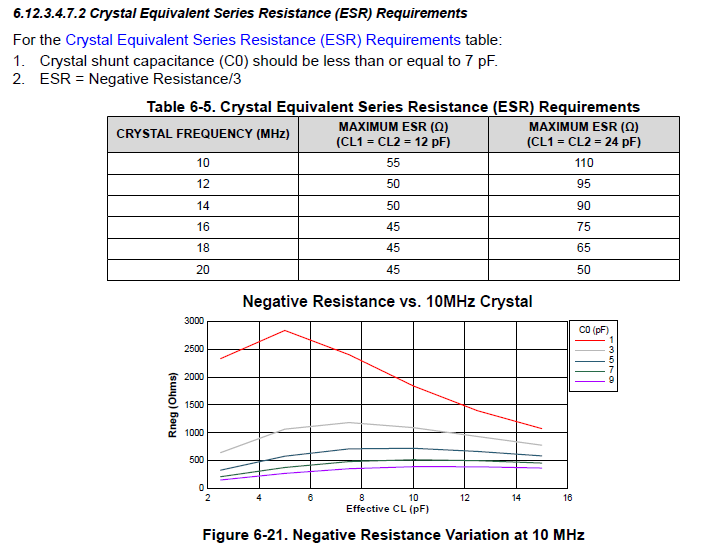Tool/software:
Hi Champ,
How we get the data for Figure 6-21 Negative Resistance Variation at 10 MHz, by testing on EVM board?

From the datasheet, in 10MHz case , the maximum ESR is form 55 to 110.
ESR = Negative Resistance/3,
in case the effective CL from 6-12pF, C0 = 1-7pfF. the Negative Resistance is very large >500Ohm, but from datasheet, the generally accepted practice is to have Rneg > 3x ESR to 5x ESR to ensure the crystal starts up under all conditions.
How to understand above Figure 6-21?

